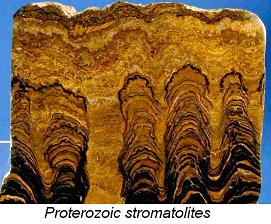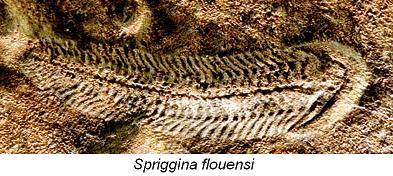
Darwin seemingly had little faith in the fossil record as a source of evidence for his theory; it was just too incomplete:
‘I look at the natural geological record, as history of the world imperfectly kept, and written in a changing dialect; of this history we possess the last volume alone, relating only to two or three countries. Of this volume, only here and there a short chapter has been preserved, and of each page, only here and there a few lines. Each word of the slowly changing language, in which the history is supposed to be written, being more or less different in the interrupted succession of chapters, may represent the apparently abruptly changed forms of life, entombed in our consecutive, but widely separated, formations. ‘
In the last 150 years however, new finds and new ways of analysing old finds have revealed many, many pieces of evidence in support of evolution.
How To Enter The Fossil Record.
To become a fossil is a difficult thing; to enter the fossil record is even harder. When an organism dies usually the soft parts will rot away, and for many organisms the “soft part” is the whole thing! So most of the fossils we find are shells, bones and woody tissues. When these hard materials are covered by layers of sediment they can be compressed and a process of mineralisation occur whereby the hard remains are replaced by minerals crystallising out of water in the sediment: usually these are minerals like calcite, pyrites or silica. In some exceptional circumstances soft tissues may become fossilised if the dead organism is buried quickly, before decay begins, in sediment lacking in oxygen.
Once a fossil has formed the rock which contains it will continue to be subjected to geological processes such as subduction and erosion, and will often be exposed to extreme heat and pressure. Therefore the vast majority of the fossils that form are destroyed, and the older a fossil is the bigger the chance this has happened. Finally, to enter the fossil record, our fossil must have survived to the current day and be residing at or near the surface of an area being explored by humans. Even if a human finds the fossil, they also need to be able to work out what it is!
How Incomplete Is The Fossil Record?
Darwin clearly thought the fossil record was very incomplete, and it probably is; the vast majority of species that must have lived on earth are not recorded in the fossil record. This isn’t really surprising. The chances of an organism becoming a fossil are slim, usually only hard materials are preserved, even then the dead organism has to avoid decay, scavengers, erosion by wind and rain, and must be covered in sediment and fossilised. Once a fossil has formed, over the millions of years following, the chance is very small that it will not be destroyed by; the immense pressure of the rock above it, the heat of the earth’s mantle below it, the heat and pressure as continental plates collide, or the processes of erosion which shape the earth’s surface! If a fossil does survive to the current day it has to be found and identified. Undoubtedly there are amazing fossils out there still undiscovered, certainly many new species of extinct species are described every year.
The Earliest Fossils
Despite these difficulties the fossil record we do have is very deep. The earliest forms of life were unicellular, had no hard parts and were microscopic, but geologists have identified structures that were built by organisms like the living blue-green bacteria. These species lived between 1 to 2 billion years ago. Colonies of these micro-organisms trapped sediment leading to the build up of little towers. Within some of these it is possible to identify microstructures which resemble cells. We can identify these fossils for what they are because some living blue green algae build similar structures.
We also have microfossils found in flint from North America which date back to two billion years ago and suggest there was a wide diversity of micro-organisms at this time. The earliest of all fossils come from rock known as the Warrawoona Group, Australia; these again are unicellular and date back to about 3.5 billion years ago!

The Cambrian Explosion
The fossil record also documents major transitions. One example is the famous Cambrian Explosion during which the first animals appear in the fossil record from about 550 million years ago. We have several beds of rock which preserve the soft bodies of these early animals such as the Burgess Shale in Canada and the Shale in Chengjiang, China. These rocks formed in exceptional circumstances of rapid burial, with little oxygen in a very still aquatic environment. Many of the fossils found are bizarre, but share a number of similarities with living animals, for example Kimberella is thought to be an early mollusc and Spriggina an early arthropod. Darwin knew about the Burgess Shale and the sudden appearance of animals in the fossil record: this troubled him as his theory predicted species should evolve gradually; where are their ancestors?

New finds have been made in rock older than those which document the Cambrian explosion, and these new finds do indeed document species earlier than the animals found in the Burgess and Chengjiang Shales. So the sudden appearance of animals isn’t so sudden anymore, more interesting is why so many new forms are found in these rocks. Various proposals have been made such as increased oxygen or the evolution of eyes promoting new arms races (or competitions which drive rapid evolution) between predators and prey.
Transitional Fossils
Paleobiologists are able to use similar characteristics of any fossil to trace common ancestry and look at how different groups are related to each other. Doing this can reveal how closely related an extinct species is to a living one. Perhaps the most convincing evidence of evolution are transitional fossil; fossils which link groups of organisms which today seem very different; they are the famous “missing links”.
We have many examples of transitional fossils from the fossil record. In the case studies section you can read about three of these; the evolution of tetrapods (animals with four legs) from fish, the evolution of birds from dinosaurs, and the evolution of humans from a more “ape-like” ancestor. These are just a few nice examples from among the many that can be found in good text books, include the evolution of horses, and the evolution of whales from terrestrial mammals via Ambulocetus, the “walking whale”.
Written by Stephen Montgomery
References & Further Reading
Almost Like a Whale
by Steve Jones, Doubleday: 1999
At the Water's Edge
by Carl Zimmer, Touchstone: 1998
The Crucible of Creation: The Burgess Shale and the Rise of Animals
by Simon Conway Morris, Oxford Paperbacks: 1999
Evolution: What the Fossils Say and Why it Matters
by Donald Prothero, Columbia University Press: 2007
Gaining Ground
by Sean B. Carroll, Indiana University Press: 2002
Your Inner Fish
by Neil Shubin, Penguin: 2009
Trilobite! Eyewitness to Evolution
by Richard Fortey, Harper Collins: 1999